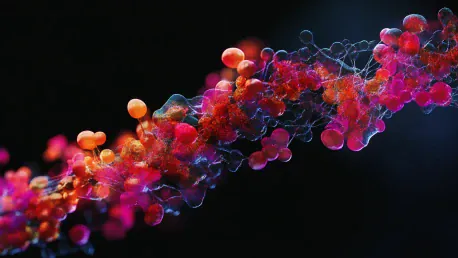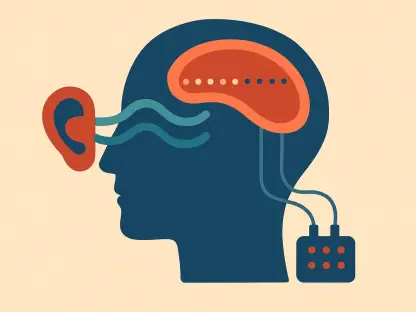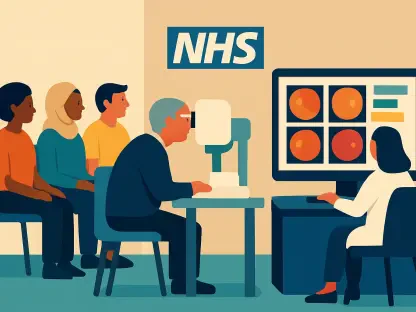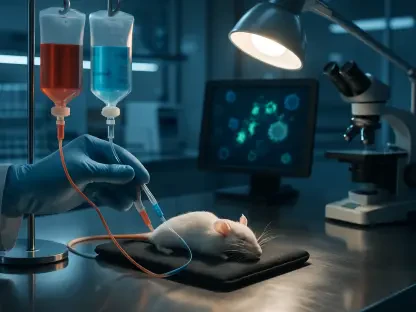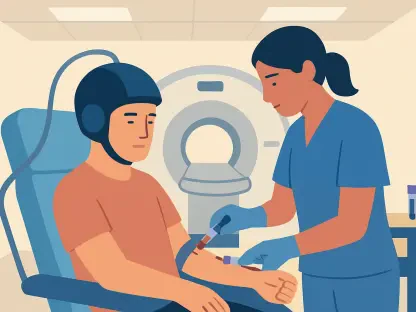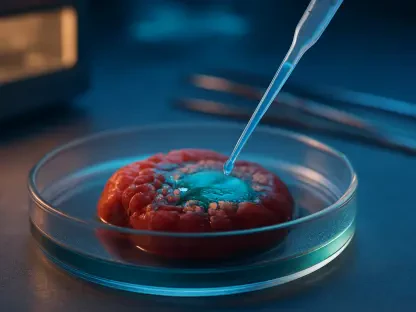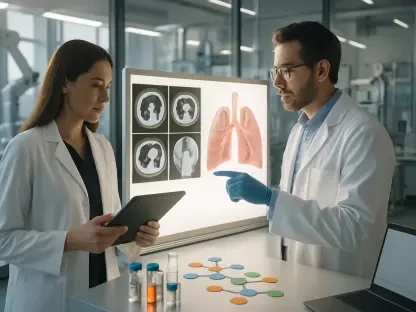Monoclonal antibodies (mAbs) have become a cornerstone of modern medicine, offering targeted therapies for a range of diseases, including various cancers, autoimmune disorders, and infectious diseases. However, developing these complex molecules is resource-intensive, requiring significant time and labor. Recent advancements in machine learning (ML) are poised to transform this landscape, enhancing efficiency and accelerating innovation in biopharmaceutical development. Researchers and industry leaders are increasingly turning to automation to streamline bioprocesses, aiming to optimize every stage of mAb production from initial experiment design to final operational methodologies.
This shift is spearheaded by cutting-edge technological integration, allowing for a more dynamic and adaptive mode of development that promises to minimize errors, reduce timelines, and maximize resource utilization. In this transformative journey, Mariano Nicolas Cruz Bournazou, PhD, from the Technische Universität Berlin, and his team have emerged as key innovators, leveraging autonomous agents to introduce a paradigm shift in the industry. The biopharmaceutical sector’s embrace of such technology indicates a broader trend towards digital biotechnology and BioIndustry 5.0, anticipating more automated and efficient biomanufacturing processes in the near future.
Leveraging Automation in Bioprocess Development
In the biopharmaceutical industry, the incorporation of machine learning has become a pivotal element in revolutionizing mAb development processes. ML tools integrated with bioprocess development allow for optimization at every stage, significantly reducing the extensive labor and resources traditionally required. Mariano Nicolas Cruz Bournazou and his team at the Technische Universität Berlin are at the forefront of this innovative shift. They emphasize the strategic use of autonomous agents, which are instrumental in accelerating innovation, reducing development timelines, and optimizing resource utilization. By incorporating ML, researchers can make data-driven decisions that continually refine and enhance the entire bioprocess workflow.
Bournazou’s approach combines several advanced technologies to drive this transformation. One key aspect is the use of autonomous systems that can learn and adapt in real time during ongoing experiments. This adaptive learning capacity not only improves the accuracy and efficiency of experimental outcomes but also allows for quicker iterations and adjustments. Furthermore, integrating ML with bioprocess development facilitates the automation of routine tasks, thereby minimizing human intervention and reducing the potential for error. As a result, the biopharmaceutical industry stands to gain significantly in terms of increased productivity and faster time-to-market for new mAb therapies.
A Multi-Pronged Approach for Optimization
The innovative strategies employed by Bournazou’s team to optimize mAb development are multifaceted, leveraging a comprehensive system that combines Bayesian algorithms, digital twins, and mini-bioreactor perfusion systems. The integration of these tools allows for rapid experimentation aimed at identifying optimal conditions for maximizing viable cell volume during mAb production. The use of a Bayesian algorithm, in particular, plays a crucial role in this process by enabling probabilistic modeling and decision-making based on pre-existing knowledge and real-time data inputs. This allows researchers to make informed predictions and refine their experiments dynamically.
Alongside Bayesian algorithms, the concept of a digital twin—an exact digital replica of the mAb cultivation process—adds another layer of sophistication. This digital twin facilitates thorough monitoring, control, and simulation of bioprocesses under various conditions. By running 24 mini-bioreactor perfusion systems simultaneously, Bournazou’s setup allows for high-throughput experimentation, significantly accelerating the discovery of optimal production conditions. The ability of the system to utilize existing process knowledge and incorporate data from related bioprocesses further enhances its efficacy, ensuring that mAb production is both dynamic and predictive. This integrated approach marks a significant leap forward in the realm of biopharmaceutical development.
Experimental Validation and Commercial Implications
To validate the efficacy of their integrated approach, Bournazou’s team conducted a series of use cases that demonstrated how their system performs in real-world scenarios. The positive results from these experiments underscore the capability of the system to streamline the mAb development workflow. The team’s ability to forecast near-term events, adapt in real time, and operate autonomously in parallel experimental setups positions their system as a scalable solution for the biopharmaceutical industry. Such capabilities not only enhance productivity but also ensure that the system can meet the high demands for mAbs more efficiently.
The successful implementation of this model at a commercial scale further attests to its robustness and reliability. Companies within the biopharmaceutical sector can leverage this technology to significantly boost productivity and reduce the timelines associated with developing new mAb therapies. The findings suggest that by integrating ML and automation into bioprocess development, organizations can achieve a more impactful and streamlined production process. As the industry continues to grapple with increasing demands for targeted therapies, such advancements offer a much-needed pathway to sustain scalability and efficiency in mAb production.
Bridging the Automation Gap
Despite the significant advancements achieved through the integration of ML and automation, the article highlights a noticeable gap between current robotic capabilities and the desired level of autonomy in bioprocessing. This gap presents an ongoing challenge that must be addressed to fully realize the potential of digital biotechnology and BioIndustry 5.0. Future ambitions envision highly automated, efficient, and adaptive biomanufacturing processes. Reaching such aspirational goals will require continued innovation and development in robotic and autonomous systems. Enhancing these capabilities is crucial for achieving seamless and error-free bioprocess workflows.
By focusing on improving the existing technological infrastructure, researchers and industry leaders can work towards bridging this automation gap. Continuous innovation in ML algorithms, robotic systems, and autonomous agents is essential to meet the high expectations of modern bioprocessing. As advancements are made, the integration of these technologies will likely become standard practice in the biopharmaceutical industry, leading to more robust and reliable biomanufacturing processes. Embracing this forward-thinking approach ensures that biopharmaceutical companies can stay ahead of the curve, keeping pace with the evolving demands of the industry.
Towards a More Efficient Future
Monoclonal antibodies (mAbs) have become essential in modern medicine, offering targeted treatments for conditions like cancer, autoimmune diseases, and infections. However, developing these complex molecules requires considerable resources, time, and effort. Recent advancements in machine learning (ML) are set to revolutionize this field, boosting efficiency and accelerating innovation in biopharmaceutical development. Researchers and industry leaders are increasingly turning to automation to optimize mAb production, from the initial experimental designs to the final operational methods.
This shift is driven by the integration of cutting-edge technologies, enabling a more dynamic and adaptable development process that aims to minimize errors, shorten timelines, and maximize resources. Mariano Nicolas Cruz Bournazou, PhD, from Technische Universität Berlin, and his team are at the forefront of this change, using autonomous agents to revolutionize the industry. The biopharmaceutical sector’s adoption of such technology signals a broader trend toward digital biotechnology and BioIndustry 5.0, forecasting more automated and efficient biomanufacturing soon.
